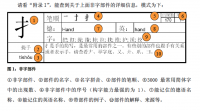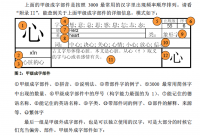Hello together,
very nice job! Some years ago when I studied Chinese in Qingdao I wrote my thesis about a similar method how to learn Chinese characters. I found the abstract of my thesis:
An alternative teaching method for Chinese characters
Abstract
This paper introduces an alternative method, based on Character components, how to teach and learn Chinese characters. According to the components meaning of the character the learner creates a story to remember the shape and meaning of the characters.
In order to use this method, the basic character components must be known. I choose HSK 800 A-grade characters as a basis for my research. After selection of the existing components, I made research with help of different character dictionaries on the meaning and origin of the components. After it, I research with help of “Wenlin Software 3.4“ the occurrence frequency among the 3000 most commonly used Chinese characters. To summarize my research information I created three documents according to the group of the components. Group one includes components which can not used as a individual character, group two are components, but at the same time HSK 800 A-grade characters, the third group includes components which can be used as individual characters but not included in the HSK 800 A-grade characters.
One result of my research is that some characters with very high “building characters ability” (often appear as a component in other characters) are rarely used as an individual character. Because of this, these characters are normally not thought in Chinese classes. But these Chinese characters, such as" 田, 隹" or "贝", are important to understand the basic meaning and/or help to give a lead to its pronunciation. No matter which method are used to learn Chinese characters, know the basic components, the basic categories and the characteristic of Chinese characters is the first step to master one of the world's most difficult languages.
Another part of this thesis is a list of examples to show how to use this method. These examples include a lot of subjective ideas; the major purpose is to let people know the main idea of this method. To achieve the best effect of the method is that the learner makes up a story by himself. In this way the learner can connect existing knowledge with a new character, which helps to recall the according information easier and faster from ones mind.
I am preparing for HSK 6 and want to use this method again, very helpful would it to get the "database" into Pleco.
As mentioned above I divided the "components" into 3 categories. The first one includes components which can not used as a individual character:

Group two are components, but at the same time HSK 800 A-grade characters:

The third group includes components which can be used as individual characters but not included in the HSK 800 A-grade characters:

Now I would like to bring it into Pleco as mentioned above, I found the excel-file (attached) used at that time. How could I do it? I read your Github, but not really understand how should I go on. Could you give some hints or support me to convert it?
Best wishes,
Eberhard Janssen
P.S.: If somebody is interested I can share my thesis from that time, but its in Chinese.



